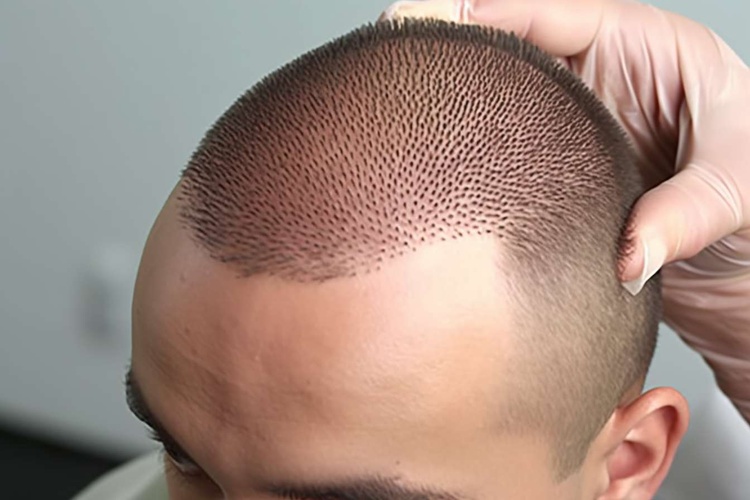Restore Your Natural Look: Complete Hair Transplant Guide
Discover how modern hair transplantation can help you regain a fuller, natural-looking head of hair. This comprehensive guide explains the main techniques (FUT, FUE, robotic FUE), who makes a good candidate, what to expect during recovery, risks, and typical costs—so you can make an informed decision about hair restoration.

Restore Your Natural Look: Complete Hair Transplant Guide
Hair transplantation has become a widely chosen option for people coping with thinning hair and balding. The procedure relocates healthy hair follicles—usually from the back or sides of the scalp—to areas with reduced or no hair, producing natural growth over time and often restoring confidence and appearance.
Main techniques used
Two principal surgical approaches are used today: Follicular Unit Transplantation (FUT) and Follicular Unit Extraction (FUE). FUT, sometimes called the strip method, involves excising a narrow strip of scalp from the donor zone and then microscopically dividing it into individual follicular units for implantation. FUE removes follicular units one at a time using a small punch instrument, leaving tiny punctate wounds rather than a linear scar. A third option, robotic FUE, applies automated technology to assist extraction and increase precision.
Each technique has advantages: FUT can be efficient for large graft numbers and may yield a higher graft-per-session rate, while FUE typically offers faster healing and less visible scarring. Robotic systems can improve consistency for selected patients. Your choice will depend on hair characteristics, the amount of donor hair, scar preferences, lifestyle, and your surgeon’s recommendation.
Who is a suitable candidate?
Not everyone with hair loss will benefit from transplantation. Typical candidates include:
- People with male or female pattern hair loss who have clear donor areas.
- Individuals whose hair loss has stabilized or is progressing slowly, so results remain predictable.
- Those who have adequate donor hair to cover the areas they want treated.
- Patients in generally good health with no medical conditions that impede healing.
- Individuals with realistic expectations about what transplantation can achieve.
Hair transplants are generally not advised for people with certain conditions—such as active alopecia areata, diffuse unpatterned hair loss, or those who lack sufficient donor supply. A personalized assessment with a qualified hair restoration specialist is essential to determine candidacy.
What happens during the procedure and in recovery?
Most hair transplant procedures are performed under local anesthesia and can last several hours, depending on graft numbers. You may feel pressure or mild discomfort, but significant pain is uncommon. After surgery, expect some swelling and tenderness in treated zones.
Common post-operative events include:
- Small scabs around transplanted follicles that typically slough off within 7–14 days.
- Temporary shedding of transplanted hair (“shock loss”) before new growth begins.
- Gradual hair regrowth over the following months; noticeable improvement often appears between 6 and 12 months.
Many patients return to light work within a few days and resume normal activities within a week, but strenuous exercise, heavy lifting, and contact sports should be avoided for two weeks or longer, as advised by your surgeon. Strictly following post-op care instructions—wound care, medications, and activity limits—helps reduce complications and supports optimal outcomes.
Risks and potential side effects
As with any surgery, hair transplantation carries risks. These may include:
- Infection
- Bleeding
- Scarring (linear scarring with FUT or small dot scars with FUE)
- Temporary numbness in the donor or recipient sites
- Unnatural hair direction or growth if graft placement is poor
- Failure of some transplanted follicles to survive and grow
Selecting an experienced, board-qualified surgeon and a reputable clinic significantly lowers these risks. Discuss all potential complications and your individual risk factors during your consultation.
Cost, insurance, and financing
The price of a hair transplant varies widely based on the chosen technique, the number of grafts required, the surgeon’s expertise, and geographic location. Clinics may charge per graft or per session.
| Technique | Average Cost Range | Typical Number of Grafts |
|---|---|---|
| FUT | $4,000 - $10,000 | 1,000 - 3,000 |
| FUE | $6,000 - $15,000 | 1,000 - 3,000 |
| Robotic FUE | $8,000 - $20,000 | 1,000 - 3,000 |
Prices, rates, or cost estimates mentioned in this article are based on the latest available information but may change over time. Independent research is advised before making financial decisions.
Most insurers consider hair transplantation a cosmetic procedure and do not cover it. Many clinics, however, provide financing plans or payment options to spread costs. It’s wise to get multiple consultations, compare quotes, and verify what is included (pre-op assessments, post-op follow-ups, medications) before committing.
Hair transplantation can be transformative, but it requires careful planning, realistic expectations, and a partnership with a skilled specialist. If you’re considering the procedure, schedule a consultation to review your hair loss pattern, donor supply, desired outcome, and the technique that best meets your goals.
This article is for informational purposes only and should not be considered medical advice. Please consult a qualified healthcare professional for personalized guidance and treatment.






